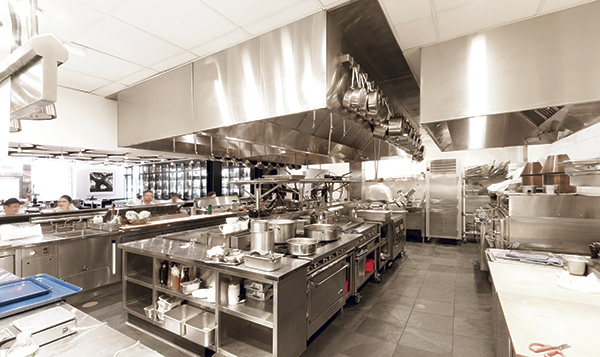Planned maintenance plays a key role in the safety and efficiency of any restaurant environment. Unfortunately, it also represents an area that some restaurant professionals try to cut quickly in an effort to save money.
"If you have a brand new restaurant operator or owner, it can be difficult getting them to understand the importance of regular planned maintenance. Hopefully, they are sophisticated enough to look at their repair and preventative maintenance costs separately," says Jeff Dover, facilities resource manager for the Restaurant Facility Management Association. "If they don't have a PM plan, I guarantee they are spending that money replacing items like compressors."
To paraphrase an old adage, cutting back on planned maintenance may be pennywise but it's often dollar foolish. "Planned maintenance protects the company's assets. And it's been shown over and over again that if you do preventative maintenance correctly you will save 50 percent to 70 percent on major repairs over time," Dover adds.
A longtime member of the restaurant industry, Dover says at a minimum each operation needs to address four areas. Following is Dover's overview of each area.
HVAC and Refrigeration: Restaurants should change filters every other month, clean the coils regularly and more. I don't recommend staff members handling most of this maintenance, including going on the roof. The liability associated with this is far too great. Just make sure the temperatures are set properly on the thermostats and brush off the coils on the refrigeration that's on the cookline.
Fire Suppression Systems: Restaurants have to tend to these systems on a semi-annual basis. Most are wet chemical systems and the National Fire Protection Agency (NFPA) drives the requirements for testing and maintenance. The size of these systems will vary, depending on the length of the hood and how much grease-producing equipment resides under it. This is a restaurant's most important safety aspect and operators can expect municipalities to be diligent in their review of these systems.
Hood/Ductwork Cleaning: Restaurants need to have a certified company clean their hoods and ducts a minimum of every three months in order to meet NFPA standards. Companies with wood-burning ovens or burger chains that are really busy will likely need to have this done every other month for safety and liability reasons.
Grease Traps: Found in the back of the house or outside, working in conjunction with floor drains, warewasher drains, etc., these keep grease, fatty oils and more from going into the municipality's water supply. Restaurants that use 1,000- to 1,500-gallon traps should pump them out at least every quarter. Of course, they may need to do it more frequently if local ordinances require this. As a general rule of thumb, the larger trap the less a restaurant will need to clean it. For example, a 5,000-gallon trap only needs to be pumped every 6 months but a municipality may require you to do it more frequently.
Consider the proper scope of work for each item listed above, Dover adds. Several factors will help determine a good scope of work, i.e., type of equipment and environment. Next, bid out the work accordingly. After choosing a contractor, track their work to ensure it is completed in a timely manner. Lastly, supervise the quality of the work. Since a facilities manager will not be available to supervise all service calls, have the vendor provide before and after photos showing the work prior to issuing payment.

